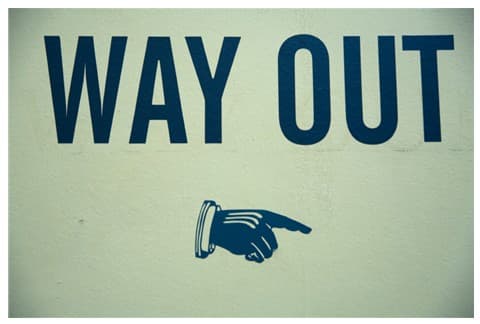
Get rid of your debt faster with debt relief
Choose your debt amount
Or speak to a debt consultant 844-731-0836
- 4 min read
- All the easy solutions to help you become debt free are good, but they won't help you with difficult debt problems.
- Put together your finances and look for professional debt relief help.
- How to become debt free? Stick with your plan.
- Start your FREE debt assessment
Is it Easy to Become Debt Free?
Easy Times - Easy Solutions!? Hard Times - Hard Solutions!?
Undoubtedly, you have come across Web sites and advertisements enticing you to sign up for a program to become debt free fast or get rich quick. These programs offer you easy solutions, for example:
- Stop using your credit cards.
- Spend less money.
- Save money.
- Make larger payments on your credit cards.
- Increase your income.
All of those are great solutions. If you can afford to make more than your minimum payments, then accelerate your payments, don’t run up new debt, and employ all those solutions. Stop here, and don’t read on. However, if you have real debt problems, bad credit, no assets to sell or use to pay off your debts, then you need to put in more effort to solve them. If you are having trouble making minimum payments, making or keeping your budget, or receiving collection calls, then read on.
How to become debt free is a good question and the more you are struggling, the more effort you will need to put in. We all know how easy it is to make a New Year resolution, or resolve to lose weight or quit smoking, but keeping on track is more difficult.
Here are three important steps on how to become debt free:
- Prepare your Budget
- Pick a Debt Relief Option
- Stick with the Plan
Take a Deep Breath - Then Prepare your Budget
While taking a deep breath won’t solve your debt problems, it will allow you to compose yourself. In order to become debt free you need to re-organize your habits. No matter which solution you choose, you need to start by organizing your financial situation. You need to answer the basic questions of how much you owe, pay and can afford.
- Start by putting together a financial package with your bank statements, credit card statements, salary and income statements, and any other bills and receipts.
- Read about making a budget. Bills.com offers a comprehensive guide.
- Decide if you want to start the budget making process by yourself, by using online budget tools, or through a professional agency.
No matter which option you choose, a budget and thorough understanding of your financial situation is necessary to move toward becoming debt free.
Take the Jump - Pick a Debt Relief Option

Preparing your budget, or at least putting the information together was a big step, but don’t stop there. Be proactive in finding debt relief solutions. How to get debt free depends on the details of your financial situation. If you are having serious debt problems, these are the main solutions:
- Credit Counseling
- Debt Settlement
- Bankruptcy
Quick tip
Figuring out which debt relief is best for you is complicated. Bills.com offers you a valuable tool, the Debt Coach , that helps you analyze your situation and recommend a debt relief solution.
How to become debt free through those programs is simple. You enter a program, with professional guidance, which then structures your debts into different types of payment schedules.
Credit Counseling
- You receive a credit counseling session, which thoroughly reviews your financial situation and helps you set up a budget.
- The Debt Management Program Provider negotiates lower fees and interest rates. You pay back all your enrolled debts over a five-year period.
Debt Settlement:
- You receive a consultation, which should be free, and includes a comprehensive analysis of your financial situation. Make sure you understand the pluses and minuses of the program. You stop paying your creditors and pay funds into a special purpose account.
- The debt settlement company negotiates with your creditors a final payoff at a reduced sum. The program usually takes about 2-4 years to complete.
Bankruptcy:
All bankruptcies must be court approved and involve many legal technicalities. I recommend that you speak with an experienced bankruptcy lawyer before proceeding.
- You receive a counseling session through a government approved debt relief agency. This session includes an in-depth examination of your finances and budget. The agency will review with your bankruptcy as well as other debt relief solutions.
- In a chapter 13 bankruptcy a payment plan is set up, over a five-year program. At the end of the period, all of your qualifying debts are discharged. A chapter 7 bankruptcy discharges all you qualifying debts within a very short period, about 3-6 months.
How to Keep Debt Free - Stick with the Plan
Many people begin to make a budget, and then give it up. Many customers, as many as 75%, drop out of credit counseling, mostly due to committing to a payment that they can't make. The realization of being in debt and the discomfort it causes is a strong motivating factor to look for a solution.
It is up to you to take the first steps of organizing your finances. Fortunately, there are professional who can help you work through the complicated issues involved in becoming debt free. Work with the professionals, and stick to your plan.

Get rid of your debt faster with debt relief
Take the first step towards a debt-free life with personalized debt reduction strategies.
Choose your debt amount
Or speak to a debt consultant 844-731-0836